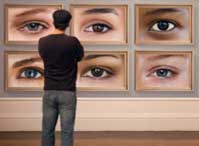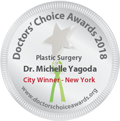COVID-19 and the Ears, Nose & Throat – A Layman’s Guide

An Overview
With shelter-at-home mandates extending to the far reaches of the world across nearly all continents, and with media coverage updates 24/7, it’s almost impossible to be unaware of the novel coronavirus. But, it is common to have questions, to be unsure of the answers you receive, and to be afraid. This information has been compiled from reputable medical sources around the globe in attempt to answer the following questions:
- What are the first symptoms of COVID in most people and how do the symptoms of COVID start?
- Can COVID start with pink eye?
- Can COVID symptoms start with a sore throat?
- Can COVID symptoms start with a change in the sense of smell?
- What are the full symptoms of COVID?
- Can COVID symptoms come and go?
- Can COVID symptoms last three weeks?
- How to tell: COVID vs. flu? COVID vs. allergies? COVID vs. cold?
The 5 W’s: Who? What? Why? When? Where?
Whether COVID-19 was initially developed to be a bio-weapon, where and who developed it, and/or whether is was accidentally or purposely released into the environment, we may never know. What we do know is that the lab in the Wuhan province of China, like all bio-safety labs, was studying bio-containment of COVID-19 and other potential infections agents and toxins in order to learn to protect individuals and environments from exposure when COVID-19 was first detected in the environment.
COVID-19 has spread rapidly and unrelentingly, affecting an enormous portion of the world’s population and substantially changed life as we have known it. While some people are asymptomatic carriers and others are lucky enough to recover after experiencing only mild symptoms, others, long haulers, are hounded by long-lasting symptoms, and some succumb to its deadly attack after prolonged hospitalizations, intubations, ventilator assistance, and unsuccessful clinical treatment trials. There is a consensus that those at highest risk of death are those with low levels of Vitamin D, the elderly, smokers, those with cancer, those with obesity, underlying heart, lung, kidney or liver problems, and/or autoimmune disease.
How COVID-19 Enters the Host…
COVID-19 is aerosolized (meaning it travels in the air through particles emitted during speech, sneezing, coughing, etc.) and as such, it remains airborne for some uncertain distance and period of time. These qualities enable COVID-19 to infect vast numbers of the population in record time. Because it is an aerosolized, and partly airborne virus, the novel coronavirus typically enters the host through the nose, mouth and/or eyes.
Hand Sanitizers, Masks, Gloves, Social Distancing and More
Drastic measures, like lengthy shelter-at-home mandates and social distancing have been widely implemented as a battle tactic to limit general exposure because hand-washing, hand and surface sanitizing, donning of masks, head coverings, glasses and gowns were not enough. Due to shortages, makeshift face coverings are recommended, although COVID-19 is small enough to pass through fabric masks and even surgical masks, making it uniquely difficult to control. At the very least, it can lower the exposure to high viral loads. This can be beneficial because COVID-19 symptoms may be proportionate to the amount of virus to which one is exposed.
What are the first signs of COVID-19?
Symptoms of COVID-19 differ depending on the virus’s site of entrance. If the novel coronavirus enters through the eyes, symptoms of pink eye may be noted. [Refrain from touching your eyes!] If the novel coronavirus enters through the nose, symptoms can be the loss of the sense of smell, runny nose and/or the loss of the sense of taste. Unlike symptoms of a cold or allergies there is typically no significant nasal congestion, sneezing and/or itchy eyes with COVID-19. [Refrain from touching your nose!] If COVID-19 enters through the mouth, symptoms of COVID-19 can be sore throat and/or change in the sense of taste. [Refrain from putting your fingers in your mouth, drink lots of water and gargle often.] It may be hard to distinguish early COVID-19 symptoms from typical flu (Influenza) symptoms because both may present with fever, muscle aches and pains and headache. In those cases, testing is imperative to make the diagnosis. It is also important to note that in some, there may be symptoms of COVID-19 before the test results become positive. In others who are carriers, the test may be positive before there are symptoms.
As ENT symptoms progress…
COVID–19 symptoms can come and go, and can last up to three weeks. Long haulers may have symptoms that linger for an indefinite period of time.
In general, once the virus invades the host and replicates, symptoms increase often with fever, muscle aches and pain, and intense fatigue. When COVID-19 that through the nose, the virus can reach the brain and central nervous system by traveling along the olfactory nerves (for sense of smell) located at the very top of the nose. This can cause headache, dizziness, a change in the sense of smell, taste and/or hearing, with or without nausea. As the virus replicates in the throat, it can be inhaled to reach the lungs and cause cough, chest congestion, chest pain, and pneumonia. It can also be swallowed and lead to nausea, reflux, vomiting and even diarrhea. COVID-19 lives in the saliva for more than three weeks, and in the stool for about forty days.
What are the full symptoms of COVID-19?
After the novel coronavirus enters the body, usually from the eyes, nose or mouth, it migrates and begins to replicate in many organs. Early on, it can affect the kidneys and causes a temporary increase in BUN and creatinine levels in the blood signifying less effective kidney function. COVID-19 can affect the liver, causing a transient viral hepatitis with diminished liver function and a corresponding elevation in liver function tests in the blood. COVID-19 can cause pneumonia in the lungs making it more difficult to obtain proper oxygenation and full air exchange. COVID-19 can enter the heart muscle and causes a cardiomyopathy, making it harder for the heart muscle to function properly. COVID-19 can affect the digestive system and nervous systems as described above. It can also cause hallucinations. COVID-19 can attack the muscles causing weakness and fatigue, and obviously, the cells of the immune system. There may not be any body system that is safe from novel coronavirus attack.
How does the immune system respond?
For most people with healthy immune systems, the body successfully fights the virus with its immune “military” system. Just like the sections we have in our military consisting of an army, navy, air force, marines, and space division, our immune system has separate entities with which to perform specialized tasks. They include the white blood cells (with T and B cells), antibodies, the spleen, the thymus, the bone marrow, the lymphatic and complement systems. Elderly, obese, immune-compromised and others with comorbidities like heart, lung, liver or kidney disease are at increased risk of losing a battle with COVID-19 because their “military divisions” are already preoccupied with and engaged in defending ongoing assaults. With a substantial portion of their “soldiers” already deployed, these high risk individuals are left with limited fighters to defend them against a perilous new attack from the novel coronavirus.
Makes sense, but now what?
There are the immediate needs and the longer-term considerations. First, it is of paramount importance that we keep frontline healthcare workers safe enough to care for the rising number of acutely ill. By absolute necessity, first responders and frontline healthcare providers must have appropriate and bountiful personal protective gear. This means all doctors, nurses, nursing assistants, respiratory therapists, unit clerks, nurse practitioners, food service workers, pharmacists, housekeeping staff, etc. Proper protection means waterproof gowns, full head covering, impermeable face shields, double gloves, and N95 masks that must be changed for and between patients. Reusing this personal protective equipment only marginally protects the provider, but adds incremental risk to those infected because contaminated coverings can transmit COVID-19 among and between patients and other providers.
Longer-term healthcare goals should ideally aim for virus extinction or at least disabling the virus’s ability to rampantly infect the population and overrun the healthcare system. Viral eradication historically entails the use of a vaccine. Although brilliant scientific minds are collaborating and working at break-neck speed.
In the meantime, we must continue to take these 4 steps…
- Testing and Contact Tracing
The entire population must be tested and retested in order to fully understand and document the scope of those affected. If we do not know the denominator (that is the complete number of people infected/exposed), then “rates” of infection, death and/or cure are completely inaccurate.
- Stop COVID-19 from attacking and replicating
Scientists and doctors will continue to explore ways to stop the virus from gaining entrance into the host, and/or from replicating in the host. Clinical trials are ongoing around the world and doctors and scientists from around the world are sharing information in real time and collaborating to find solutions.
- Return to work
We must diligently and conscientiously consider a reasonable time period for shelter-in-place once we know the extent of infection and exposure, and we have enough protection and supplies in the healthcare system, and we better understand risks of re-exposure and re-infection. There is a lot that we still don’t know. For example, we presume that those who have recovered from COVID-19 and who are symptom free with antibodies to COVID-19, are personally protected from reinfection. But, we don’t know if they still able to infect others? We do know they may still have viral shedding from their saliva and stool for up to six weeks. We also know that we can measure antibodies to COVID-19 in those who have been exposed/infected. We believe that those antibodies signify personal immunity, but we don’t know if those with antibodies will be safe from reinfection over time? Perhaps their antibody levels will drop off placing them at risk for reinfection and making it necessary to receive a booster vaccination (meaning a second micro exposure like for Measles, etc.) to ramp up their personal immune protective response? And, what about immunity for those who have received convalescent plasma? Will they experience sustained personal protection against COVID-19 or will they require a booster as well?
- Vaccination
As of December of 2020, Pfizer and Moderna vaccines have been granted approval for emergency use by the FDA. Each requires two injections to be given, the second Pfizer one at 28 days and the second Moderna one at 21 days after initial injection.
Both Pfizer and Moderna’s mRNA vaccines “train” the immune system to recognize and attack the virus prior to exposure. This enables the immune system to mount a rapid and powerful attack if confronted. This method of vaccination is new and it is safer in that it does not require a small dose of the virus to be given to individuals. Data from clinical trials have shown that those vaccinated have less severe symptoms if they come in contact with COVID-19. However, we do not know how long the vaccine’s instructions will be “remembered” by our immune system. We also don’t know if the vaccine will prevent us from becoming infected or prevent the spread of infection in general. More studies need to be done to determine whether the vaccine is safe for use in those who are immune compromised, those with autoimmune disease, those who are under age 16, and those who are pregnant or lactating. With time, as more and more people are vaccinated and followed, we will gather answers to those unresolved questions.
Read Dr. Yagoda’s further thoughts on COVID-19 and our collective future.
Read Dr. Yagoda’s thoughts about the Moderna vaccine and facial swelling around fillers.
Read this article about ongoing research regarding COVID-19 and the loss of the sense of smell and/or taste.
Prime Journal, May/June 2020
“The New Normal For Aesthetic Practices”
Dr. Yagoda’s COVID office safety protocols



































